Contents
World Heritage Kiyomizu-dera Temple
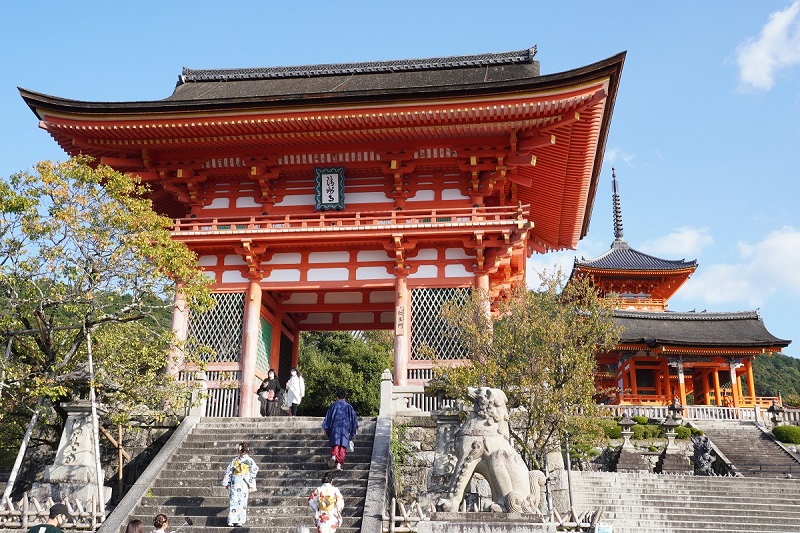
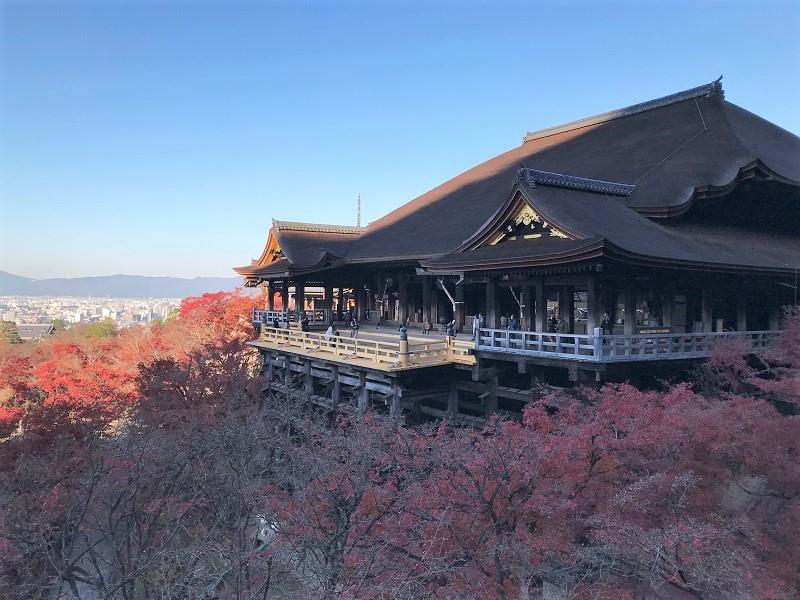
Kiyomizu-dera Temple, which is famous for the stage of Kiyomizu, is a popular tourist destination that millions of foreigners visit when they come to Kyoto. As you climb Kiyomizuzaka slope, you will be greeted by towering Nio-mon Gate. It has become a popular spot where many people are always taking pictures. There are rare guardian dogs, both of them open their mouths.
From the stage of Kiyomizu, you can overlook the city and enjoy a refreshing view. It is a wonderful view of cherry blossoms in spring and autumn leaves in autumn.
History of Kiyomizu-dera Temple

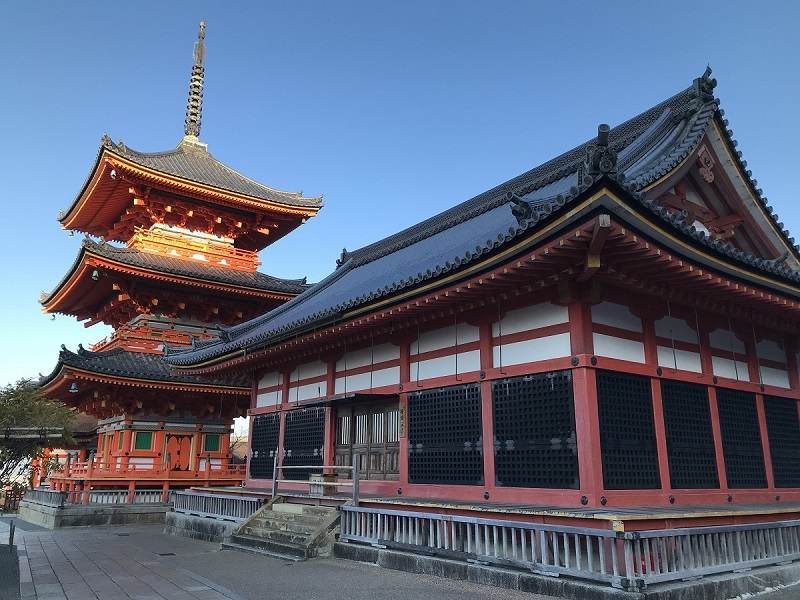
Kiyomizu-dera is older temple in Kyoto, originating since before the relocation of the capital city to Heiankyo.
Kenshin (Enchin), who was training in Nara in 778, headed north due to a dream announcement, and he arrived at Mt. Otowa, the land of the temple. He met a hermit who was training at Otowa Waterfall, and he was granted a sacred tree by the hermit. Kenshin carved a Senju Kannon statue on the sacred tree and made a thatched hut as a Kannon sacred place.
Two years later (in 780), Sakanoue no Tamuramaro who visited Mt. Otowa for deer hunting, met Kenshin, he was devoted to Kannon after being preached about the sin of killing by Kenshin. Sakanoue no Tamuramaro became a Seii Taishogun in 780, and donated his residence as the main hall to enshrine the statue of Kannon.
The symbol of Kiyomizu-dera Temple
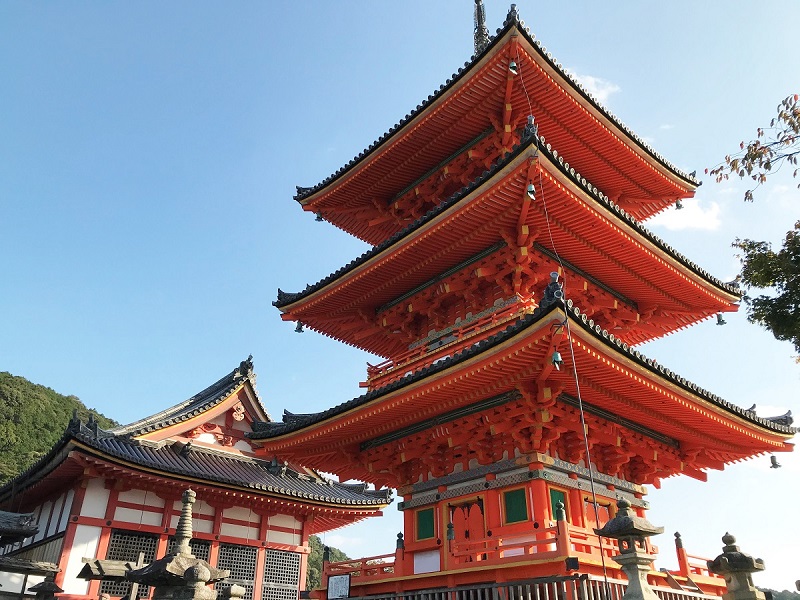
After passing through Nio-mon Gate, the largest three-storied pagoda (important cultural property) in Japan stands. It was rebuilt by Iemitsu Tokugawa in the Edo period. After subsequent repairs, the tower has been revived in a beautifully colored form. The statue of Dainichi Nyorai (Vairocana) is enshrined inside the tower.
ZUIGU-do Hall
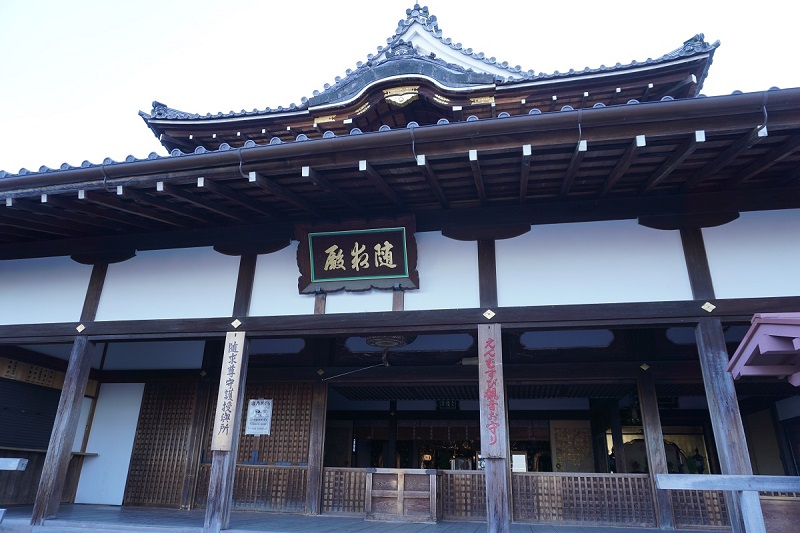
The principal image of this hall is Daizuigu Bodhisattva, which is said to fulfill all the wishes of the people. The hall has a reputation for walking in the darkness, named Tainai Meguri, which makes the entire hall look like Bodhisattva’s womb. It is temporarily closed due to coronavirus.
Hondo Hall, the Main hall
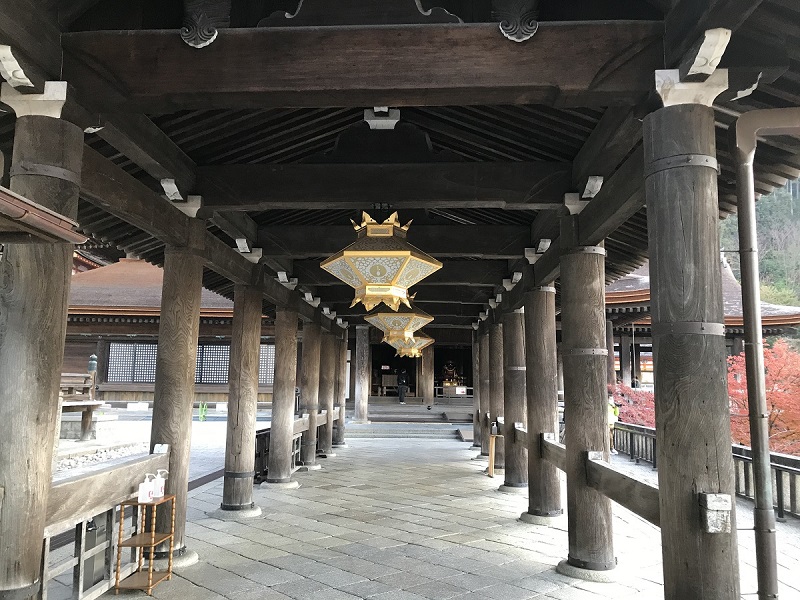
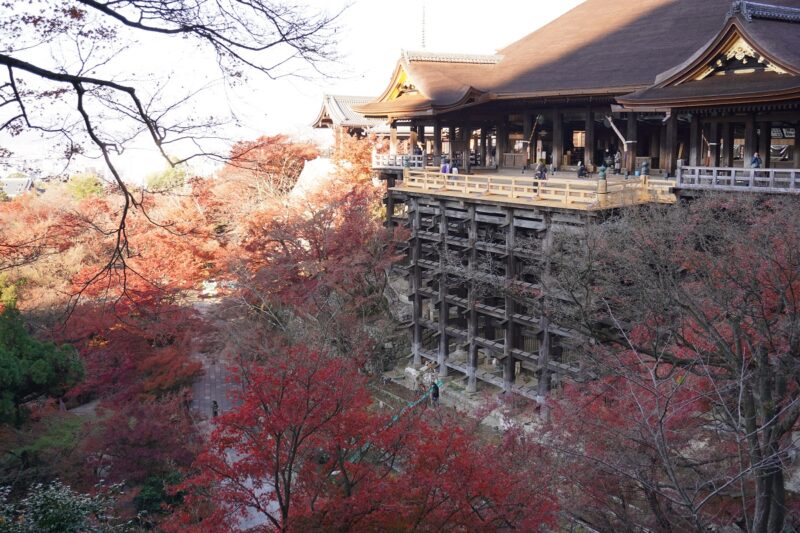
The principal image is a wooden standing statue of Eleven-faced Senju Kanzeon Bosatsu, a secret Buddha, which is open to the public once every 33 years. The temple is worshiped by people who wish for sound health, good luck, and good matches.
The temple is the stamp office for temple number 16 of the 33 Saigoku Kannon Pilgrimage.
Kiyomizu-dera Temple was destroyed by fire many times. The current main hall was rebuilt by Iemitsu Tokugawa in 1633 and is a national treasure.
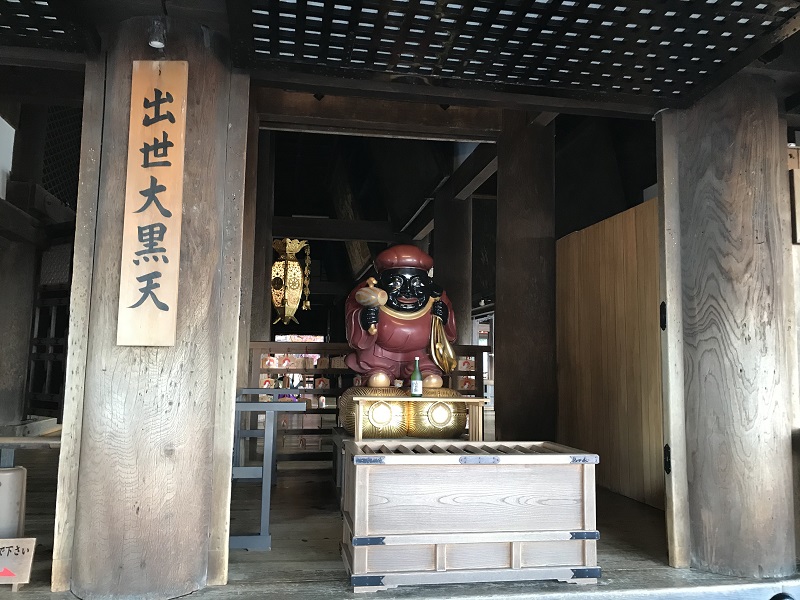
Kiyomizu-dera Temple has a lot of benefits, there is the smiling and shiny statue of Daikoku Ten in the main hall. It’s said to improve your work luck and money luck.
The stage, Kiyomizu no Butai (national treasure)
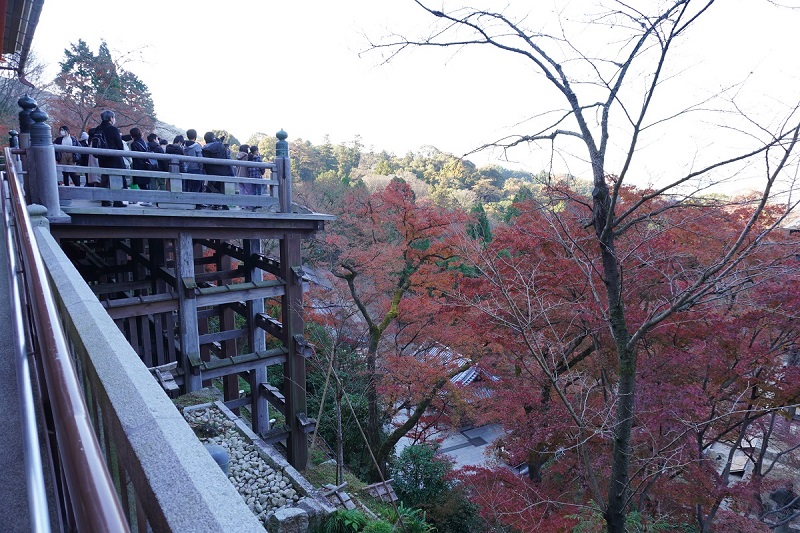
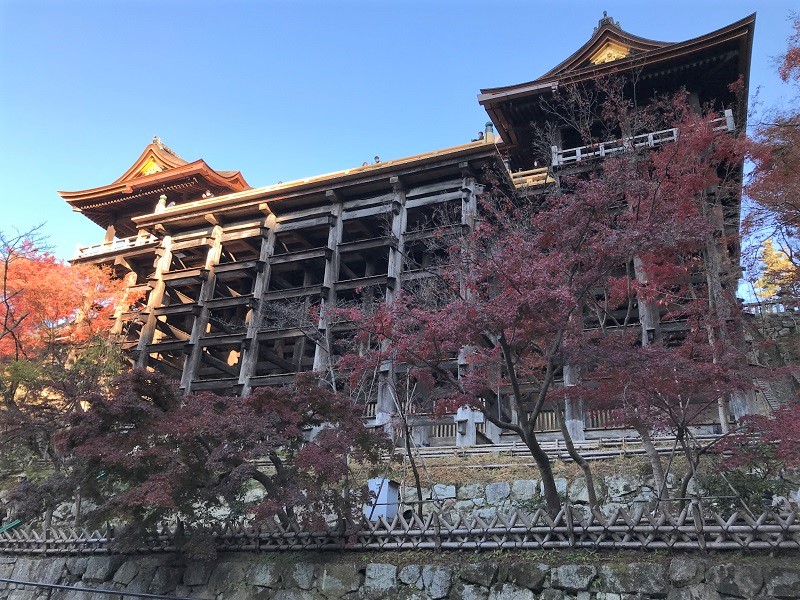
It was built to dedicate a dance to Senju Kanzeon Bosatsu, which is enshrined in the main hall. It is a 13m high stage supported by zelkova pillars. It has a highly earthquake-resistant structure made by the technique of supporting each other with wood without using any nails.
AMIDA-do Hall
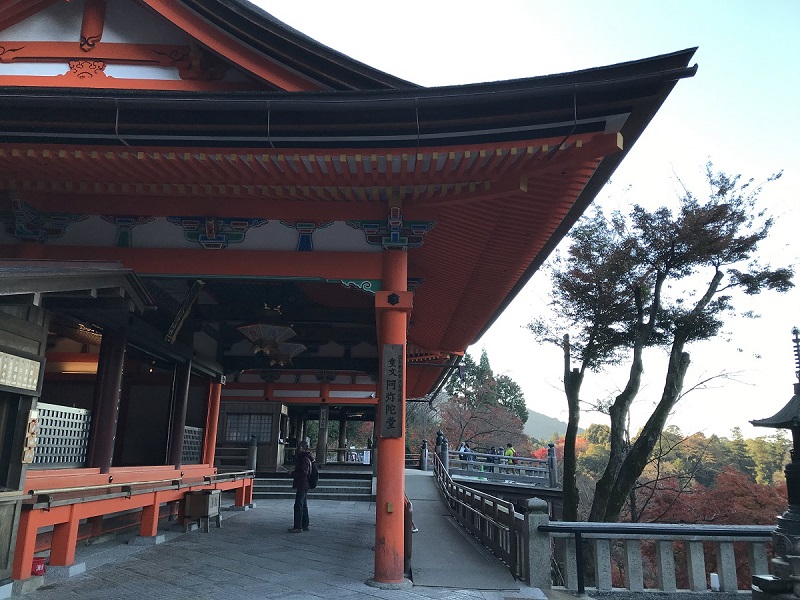
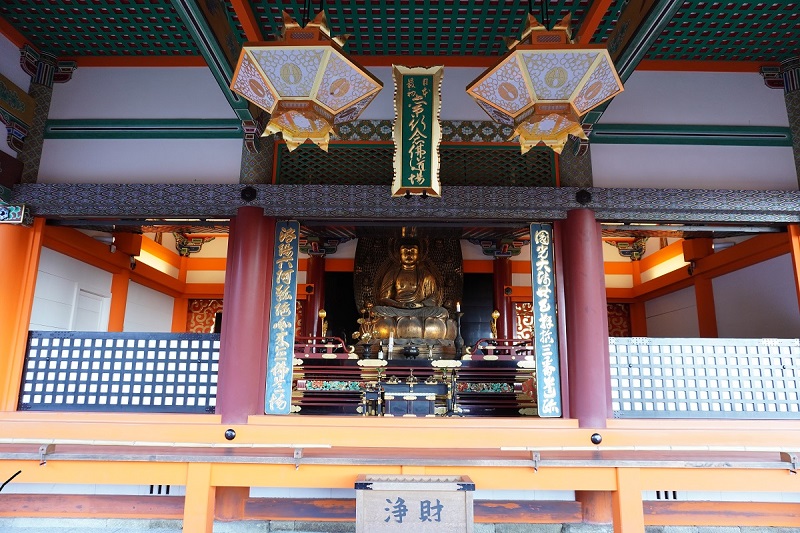
This is the place where Honen opened the fierst Nenbutsu seminary. It is visited by many worshipers. A sitting statue of Amida Nyorai is enshrined in the center of the beautiful hall.
OKU-no-IN

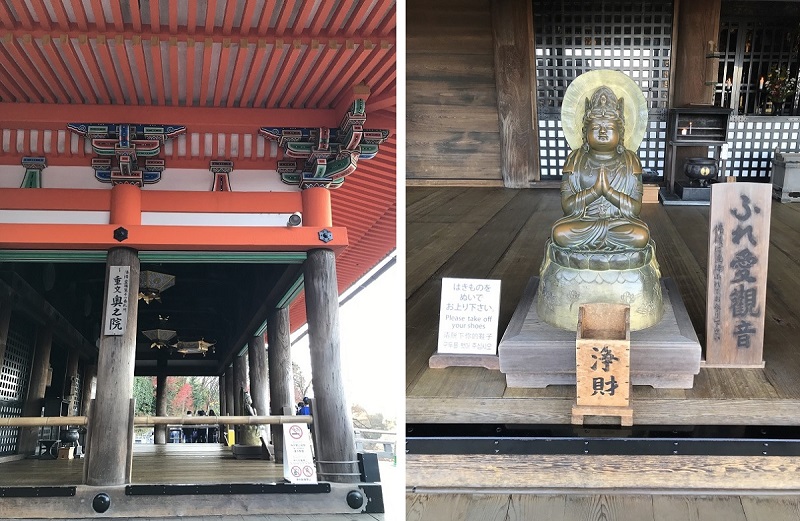
Oku-no-in has the stage that is smaller than that of the main hall, and visitors can enjoy the full picture of the main hall. It is an important cultural property. There is “Fureai Kannon” with a gentle smile which you can touch directly.
OTOWA Waterfall
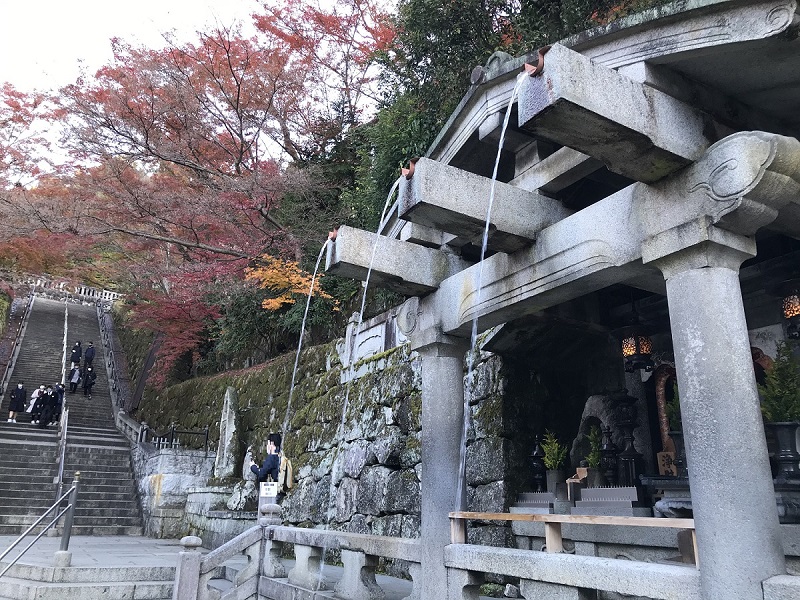
This waterfall is the origin of the name of the temple. It is said to be a sacred water that is effective against all diseases. Each of the three waterfalls has its own benefits. From the left, it is said that there are benefits of academic achievement, love fulfillment, and longevity, and if you choose one and pray for it, you will get a benefit. Please note that if you drink all three, you will lose your benefits.
Access
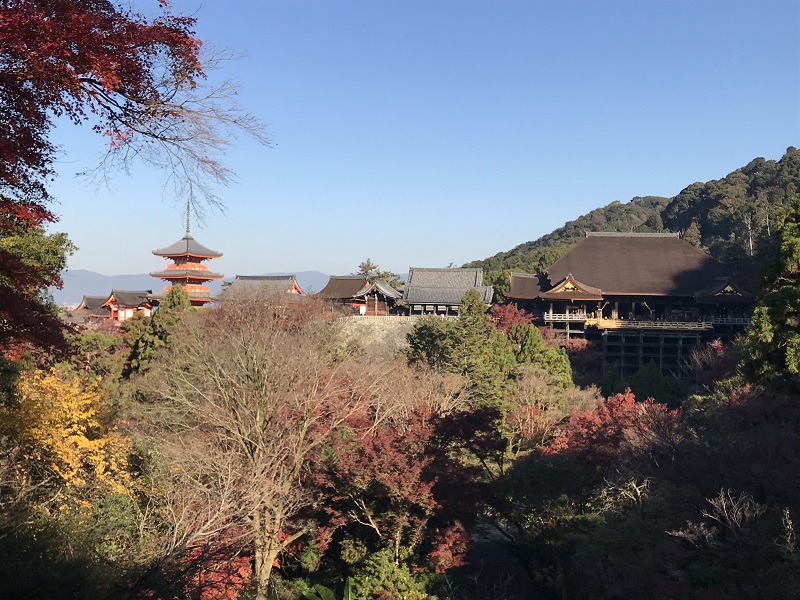
10 minutes walk from the city bus “Gojo-zaka” or “Kiyomizu-michi” bus stop.
Click here for information around Kiyomizu-dera.
Click here for information of YASAKA-jinja Shrine.
Click here for information of JISHU-jinja Shrine.